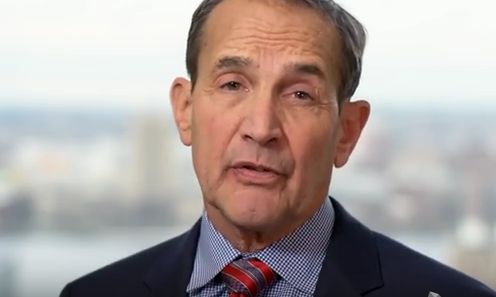When the Centre for International Finance and Regulation (CIFR) says that “investment horizon reflects an interconnected web of influences,”1 chief among them is the relationship between asset owner (principal) and asset manager (agent). It’s a relationship where we see growing friction, largely based on the misalignment between asset owner time horizons and the delegation of investment decisions to asset managers. We touched on this misalignment in my last post, but now it’s time to be more clear about one of the root causes.
Both asset managers and asset owners play a part in this misalignment — and one of the most significant areas of confusion is the lack of clarity around full market cycles. While most active managers will state that their objective is to outperform over a full market cycle, they need to be more emphatic with asset owners up front about how much time that really entails and why they need it, especially if they state they have a long-term philosophy. They must also be clear about the fact that this is what investors are paying them to do. Asset owners need their own sense of clarity around the length of a full market cycle, because, as CIFR research acknowledges, “there is no common definition of long-term horizon that is accepted or clear.” Asset owners also need to recognize the importance of giving their active managers a full market cycle, and whether or not their own time tolerance will allow them to make that commitment.
So let’s start with clarity on the definition of a full market cycle. We see that as peak to peak or trough to trough. What history has shown us is that, on average, a full market cycle is at least 7 to 10 years, depending on the extent of any drawdowns in the market, i.e., 15% or 20%. According to our recent investor sentiment survey, and as shown in the exhibit below, more than half the institutional investors we spoke with around the globe know this. But their time tolerance does not line up. As you see in the exhibit, at least 70% of the investors we surveyed would only tolerate underperformance for three years or less.
What results from this misalignment of time horizons between investors and those managing their money is principal/agent friction. And that has potentially significant costs to institutional investors, particularly those who might be pressured to hire and fire active managers at the wrong time because their boards are focused on chasing short-term performance. In fact, as we see in the third bar of the chart, many boards are placing demands on their internal investment staff to deliver alpha in less time than the investment staff gives external managers to perform.
The trouble is, we may also be underestimating how much this misalignment is driving institutional investors into pro-cyclicality, i.e., a herd mentality. In a paper on countercyclical investing, Bradley Jones at the International Monetary Fund (IMF) points out that investors often hire active managers just after a period of outperformance, only to experience a period of subsequent underperformance based on where they are in the market cycle.3 Or after doing a tremendous amount of due diligence to hire active managers, institutional investors might be forced to replace underperforming managers, only to leave alpha on the table as these fired managers often outperform in subsequent periods. As Goyal and Wahal point out in their widely read Journal of Finance article, these hire and fire decisions can damage investor returns over time.
To avoid rotating managers at the point where active skill might matter most, institutional investors need more support to impress upon their boards the importance of a full market cycle. That is particularly critical during periods of underperformance, when an active manager’s countercyclical view can help manage future risks or find good entry points to invest. Yet today, underperformance for any period has become unacceptable. That is likely because institutional investors, who have to take on so much more risk today, may naturally react by overmeasuring short-term performance to gain a sense of control and satisfy their external constituents.
Accepting periods of underperformance, however — even three years or more — could be the price of admission for allowing active skill to work effectively. We know this is a real pain point for investors. But as Mark Baumgartner points out in his paper on shortfall risk, periodic underperformance does not necessarily reflect a lack of skill. He notes that even “Warren Buffett’s Berkshire Hathaway lagged the S&P 500 in more than one-third of rolling three-year periods in the 25 years since 1987,” which, he says, is “something to keep in mind when trying to gauge manager skill over shorter time periods.”5
Getting out of this trap starts with the clarity I’ve outlined — clarity around full market cycles, around investor time tolerance and around the need to evaluate performance over longer time periods. In fact, that clarity around time is not only the start to solving misalignment, it’s the basis of good governance. When we get right to the heart of good governance for asset owners, it really is about the time tolerance built into the partnerships they have with their asset managers, as well as within their own delegation chain. That good governance is what restores and maintains alignment and builds trust that can be maintained even through the most difficult investment periods.
We know this involves a tradeoff. Asset owners, as principals, take on more agency risk when they commit to asset managers long term. So in my next post, I’ll talk about how to manage that agency risk and get comfortable with commitment.
Carol Geremia is President of MFS Institutional Advisors.





 By Fórmate a Fondo
By Fórmate a Fondo